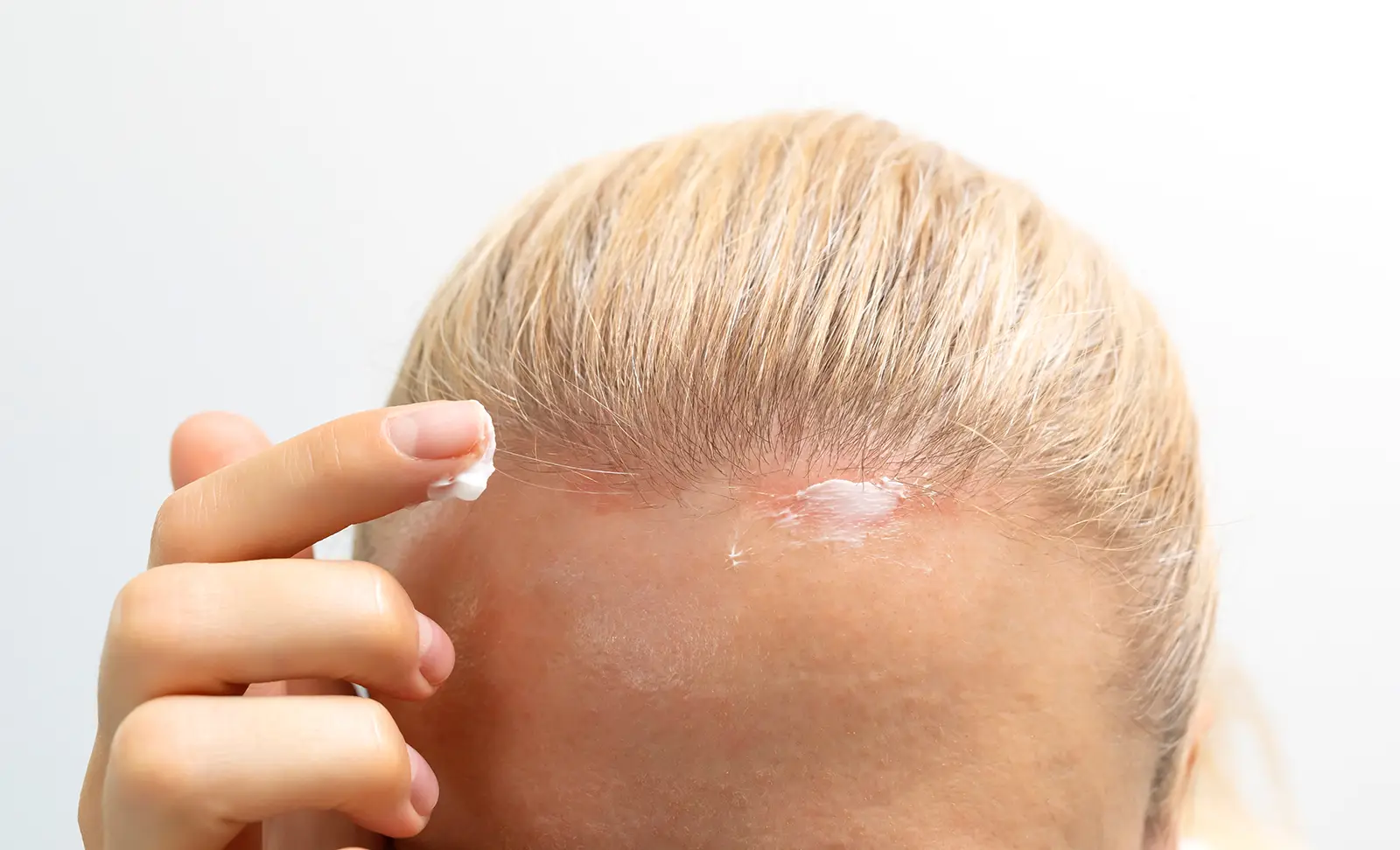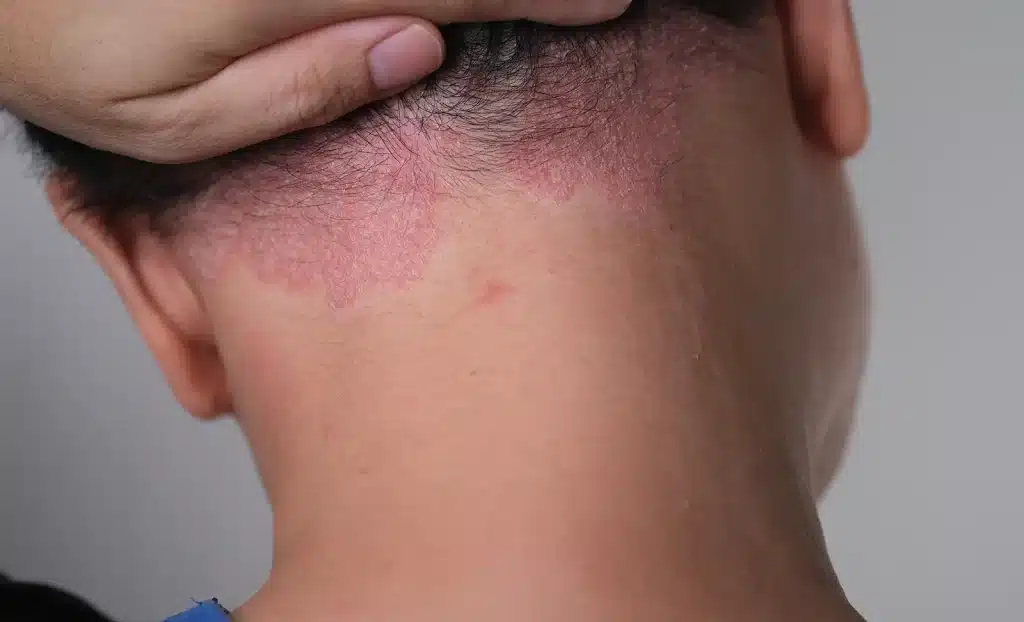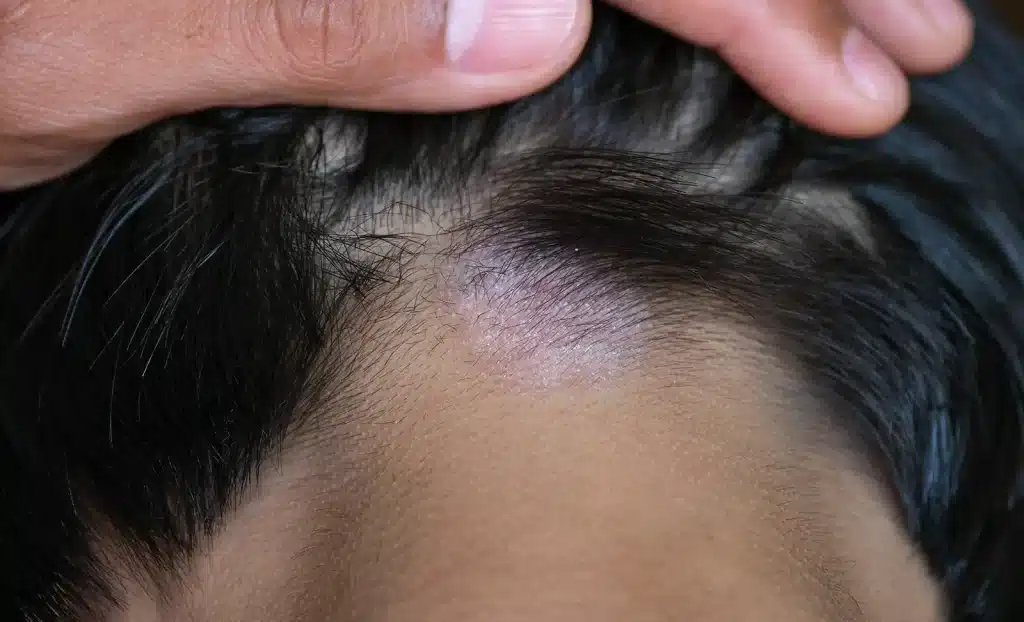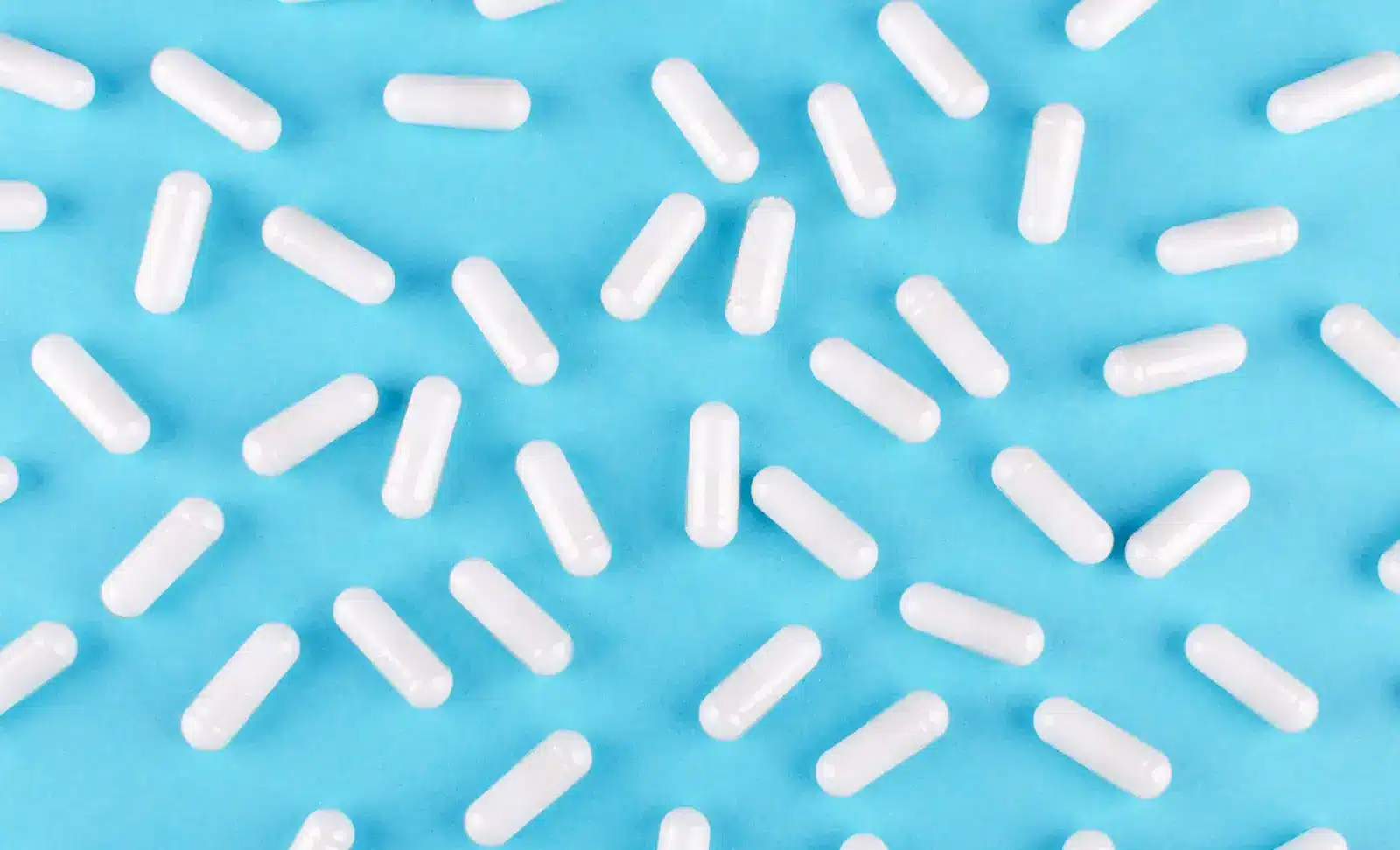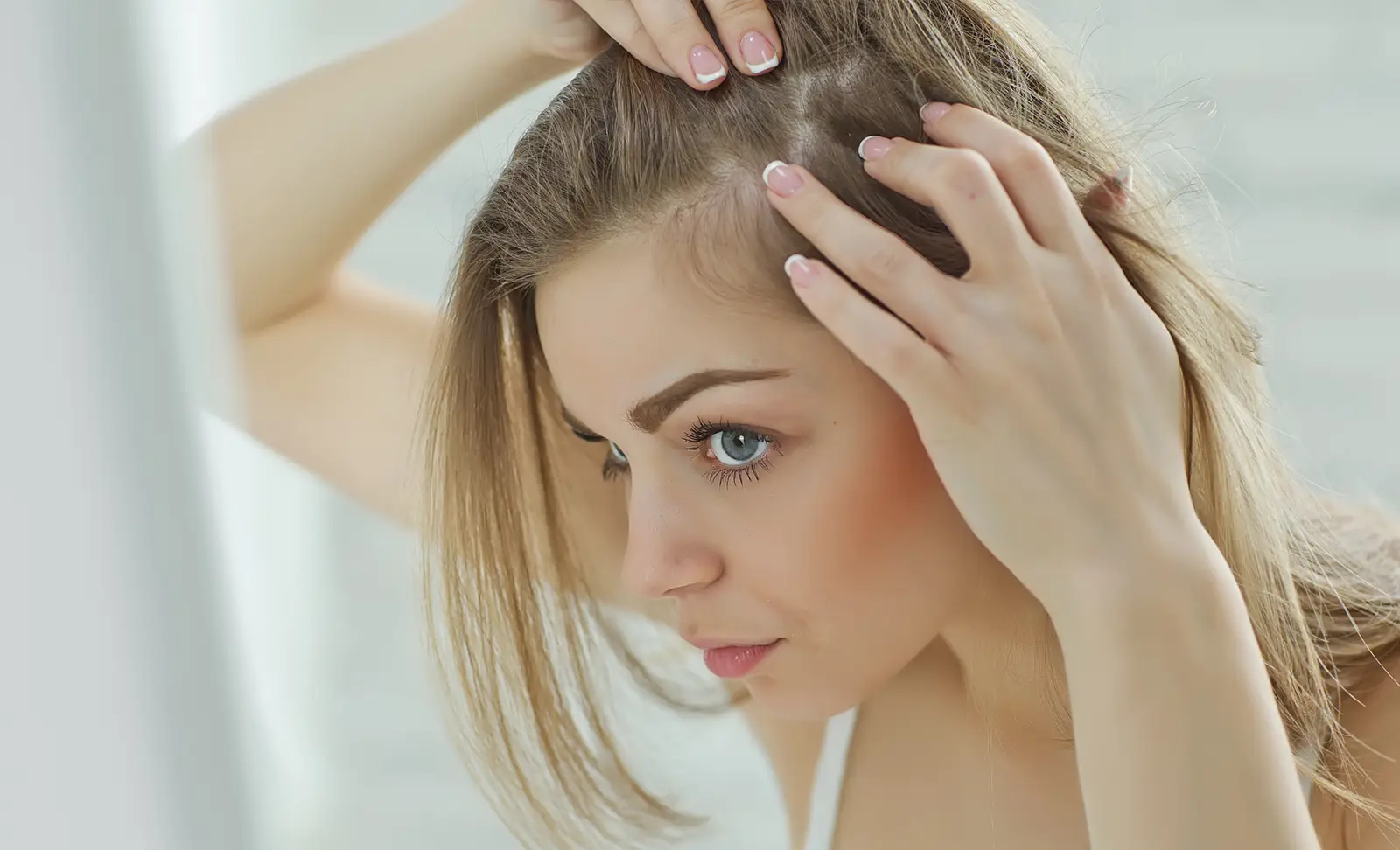We all get bumps and bruises, but when those bumps and bruises end up around your head they can seem that much worse – especially if they don’t go away. We’re automatically wired to put more emphasis on things that go on near our head, particularly around our eyes and brain. A bruise on your foot isn’t nearly worrying as a tender spot on your scalp.
While most tender spots on your scalp are indeed due to bruises or bumps, there are also many other medical scalp problems that could be the source, too.
In general, the rule of thumb is that if a tender spot persists for several days, or actually gets worse despite there not being an obvious cause (like you hit your head accidentally twice in the same spot) then you’ll need to visit a trichologist to get it diagnosed properly.
Most cases, the cause is benign.
To help you figure out if you need to go see a specialist, or if the cause can be managed at home, it’s important to understand the common causes (and treatments) for tender scalps. This article covers everything you need to know, so let’s get started:
What is Scalp Tenderness?
A tender scalp can be localised in one single area. It can also be spread around a larger area or even your entire head. This is because there are many causes for tenderness in the skin, and ultimately, your scalp is just skin.
Other symptoms you may experience alongside tenderness can include:
- Itching
- Tightness
- Tingling
- Burning
Identifying the type of soreness and tenderness you feel is step one in helping you understand the cause behind your tender scalp, and what you can do to treat it.
What Causes Tenderness on Scalp?
There are many different causes for tenderness on your scalp.
Localised Soreness
If the tenderness on your scalp is localised in one place, then the causes can include:
- Trauma
The most common reason for a single spot of soreness is trauma. The soreness may be caused by a bruise, or by a cut. If you can think back to a moment when you hit your head, or something hit you, then try to simply keep the wound clean and stop prodding it so it can heal.
- Friction/Pressure Aches
Frequently wearing helmets, headphones, and other similar equipment can cause soreness. This happens because protective gear has a bad habit of causing friction, particularly if they aren’t properly fitted or there’s something like a wayward tag itching your scalp. To help this heal, avoid wearing anything on your head until it’s fully healed. You can use a cool compress to reduce any swelling.
To avoid this, take your headgear off during breaks, only use fully cushioned options, and make sure that the gear you use fits perfectly and isn’t too tight or too loose.
- Sunburns
The skin on your scalp is the same as the skin anywhere else, and it can get burned. Symptoms of a sunburn on the scalp area include:
- Red skin
- Tightness
- Flaking skin
- Scalp dryness
- Scalp itchiness
- Inflammation
In extreme cases, the dryness and cracking caused by the sunburn can even lead to hair loss. Most mild sunburns, however, won’t get to this point. Instead, keep your scalp out of the sun, use soothing products (like after-sun lotion), and use lukewarm or cool water only to wash your hair while it’s healing.
- Seasonal Dryness
If you experience dryness, itchiness, and soreness in the scalp area particularly due to cold weather, then this may be a common sign of seasonal dryness. The rest of your skin may be in similar condition, though you’ll notice the itchiness and dryness on your scalp the most if you don’t wear hats during winter.
Soothe the affected area by using hair oils and moisturizers, as this will lock in moisture and help your body repair it’s natural skin barrier.
All-Around or Patchy Pain Areas
On the other hand, if it seems that there are patches of tenderness around your scalp, or alternatively your soreness affects your entire scalp, then you may be dealing with:
- Scalp Psoriasis
Scalp psoriasis causes severe, localised scalp irritation.[1] The size of the spot can vary, and you may have more than one spot on your head with this condition. It looks like red or purplish lines that are covered in dandruff. They will be itchy, and tender to the touch.
You can work to clear this condition with:
- Steroid creams
- Light therapy
- Anti-inflammatory medication
- Atopic Dermatitis
Visual symptoms of atopic dermatitis include redness, inflammation of your scalp’s blood vessels, and cracking or flaking off skin. The most aggressive symptom, however, is scalp itchiness. You’ll need anti-inflammatory medication and other anti-itch treatments to manage the symptoms until it goes away.
- Scalp Folliculitis
This is a very aggravating condition that causes puss-filled blisters to form around each hair root.[2] These infections of the hair follicles are painful to the touch and cause tenderness all around your scalp. You’ll also often experience inflammation, itching and burning, and scalp sensitivity. In a few cases, the blisters themselves can occur deeper under your skin, so you’ll notice pain and tenderness and may also feel smooth bumps around your scalp.
These blisters are signs of an infection. The good news is that usually keeping the area clean and using warm compresses is usually enough. If you want to do more, get medical shampoos or medication. In rare cases where the condition doesn’t clear up on its own in a few days, you’ll need antibiotics – so visit a doctor!
- Lichen Planopilaris
This is an ongoing condition that makes the skin around your scalp red, scaly and itchy.[3] The excess dryness of your scalp can even result in hair loss. If you experience this condition regularly, then it’s important you get hair loss treatment alongside scalp treatment to maintain your hair and scalp health.
This is because, unfortunately, there are no hair products that can help. There is currently no permanent cure at all. What you can do is take anti-inflammatory medication and corticosteroids to help manage the symptoms.
- Ringworm
Ringworm (officially called tinea capitis) is a fungal infection that causes round bald spots on your head.[4] The edges of these spots will be inflamed red (hence the name). You will need to get specialized antifungal medication like itraconazole fluconazole to treat it.
- Allergies
An allergic reaction can also affect the scalp. You can be allergic to any number of things, from something in your hat, to your haircare products. You may experience swelling, itchiness, soreness, burning, or even blistering. If the swelling is extreme, or if you cannot breathe, you must call emergency services ASAP. Otherwise, soothe the affected area with a cool compress, take antihistamines, and keep the affected area clean.
Scalp Tenderness from Tight Hairstyles
Everyone, regardless of ethnicity or curl pattern, can experience scalp tenderness and hair loss due to tight hairstyles – including protective styles. This is because you’re essentially pulling on your hair strands continually. This pull leads to an ache that’s officially referred to as traction alopecia.
In severe cases, you will also notice localized hair loss around the protective style, which you can track easiest with a hair track app. This will happen predominately where your hair is being pulled the most. You may also notice bumps (white or skin-coloured) around your hair roots, or black dots. If you experience these issues, take down your hair, let your tender scalp heal, and find an alternative way to put up your hair that isn’t as heavy.
How Does Trichotillomania Affect the Scalp?
Trichotillomania is an anxiety-relaxed disorder that involves compulsively pulling hair out from the scalp area or eyebrows. The constant pulling at your hair can lead to soreness and other common conditions in your scalp. While you can treat these pains with creams, the most effective way forward is to get in touch with a mental health specialist to help you work on the cause behind the compulsion.
Top Scalp Care Steps to Prevent Tenderness in the Future
There are many ways that you can prevent scalp pain before it occurs. The best way is to keep your scalp, like any other part of your skin, hydrated and protected from environmental damage like UV or cold damage. If you are susceptible to tender scalp and hair conditions, then you may want to make it a habit to wear a hat outside.
Otherwise, you’ll need to invest in the specific treatments for scalp pain based on the underlying condition.
What You Can Do If You Have Tender Scalp Hair Loss?
Most who experience scalp tenderness won’t lose their hair, but that doesn’t mean it doesn’t happen. In most cases, your hair should grow back without a problem once you heal your scalp. If that’s not the case, then you may be dealing with genetic hair loss like male or female pattern baldness.
If this is the case, don’t worry. All you need to do is treat your tender scalp, and then get in touch with our team for a hair transplant consultation.
Hair transplants are the only truly effective way of returning your hair after irreversible hair loss. Just have a look at our patients gallery to see the great work our team have done in restoring hairlines and thickening thinning hair.
You do need to heal your scalp, first, however. This way your new hair has the healthiest new environment to grow and thrive in.
Resources
[1] https://www.psoriasis.org/scalp/ [2] https://nationaleczema.org/eczema/types-of-eczema/atopic-dermatitis/ [3] https://www.ncbi.nlm.nih.gov/books/NBK547754/ [4] https://www.nhs.uk/conditions/ringworm/